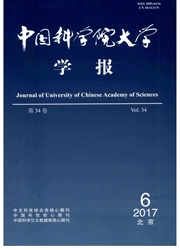

 中文摘要:
中文摘要:
以首钢厂区附近小区域为研究区,采样分析表层土壤Cd、Cu、Pb、Cr、Zn、Ni、Mn、Fe的含量.描述性统计表明:Cd、Pb、Zn、Cu含量受人类活动影响较大;Cd、Cu、Zn存在污染问题,Cd污染最为严重.进一步应用主成分分析、相关分析,并使用GIS工具进行地统计分析,发现8种金属可由3个中等空间自相关的主成分(PCs)反映:PCI包括了与交通及机动车辆关系密切的Cd、Cu、Pb、Cr、Zn;PC2包括了主要来源于首钢厂区的Cr、Mn、Fe;PC3仅有Ni,分布是随成土过程形成的.总体而言,研究区土壤重金属污染来源于交通和机动车辆,需密切关注其对环境的危害及人群的潜在健康风险.本研究对该区域土壤污染风险评价和土地利用规划等起到一定指导作用.
 英文摘要:
英文摘要:
The given study was carried out in a small urban area near Shougang group. Sixty-five topsoil samples were collected and the concentrations of Cd, Cu, Pb, Cr, Zn, Ni, Mn, and Fe were analyzed. The results of descriptive statistics indicate that anthropic activities greatly influenced the concentrations of Cd, Pb, Zn and Cu. The pollution problems of Cd, Cu, and Zn have occurred, and the worst case was found in Cd. Principal component analysis and correlation analysis were applied and geostatistical analysis assisted witb GIS tool was conducted. The results showed that eight metals could be grouped into three principal components (PCs) with moderate spatial autocorrelation. PC1 includes Cd, Cu, Pb, Cr, and Zn, which are related to traffic and vehicles. PC2 includes Cr, Mn, and Fe, which mainly come from the Shougang group. PC3 includes only Ni, which comes from pedogenic material. In general, the heavy metal pollution problems in the studied area could be attributed to traffic and vehicles to a large extent. Due attention should be paid to the subsequent environmental damage and potential human health risk. The present study plays a guiding role in the soil pollution risk assessment and the land use planning for this area.
 同期刊论文项目
同期刊论文项目
 同项目期刊论文
同项目期刊论文
 期刊信息
期刊信息
